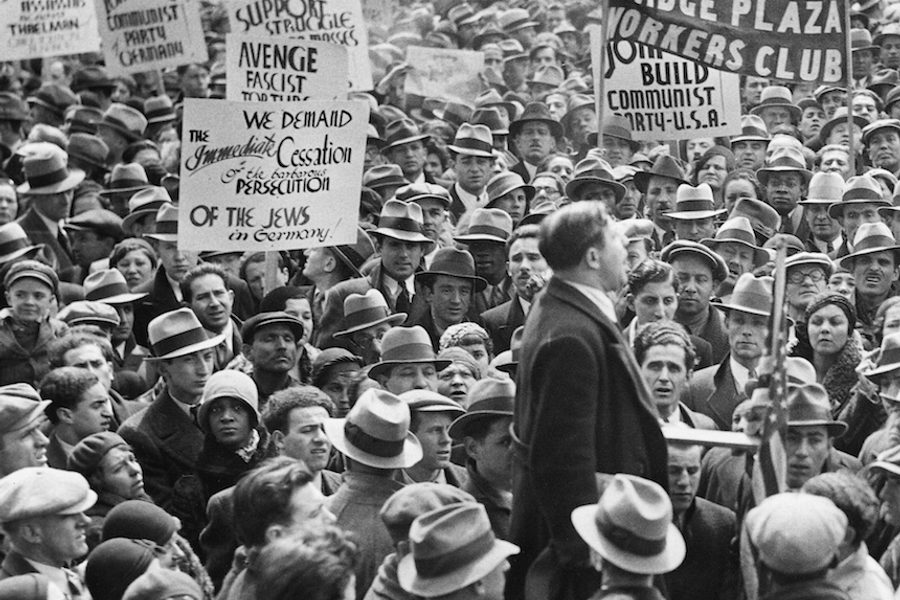
The tragic death of Heather Heyer, the 32-year-old paralegal who was killed when a motorist plowed into a crowd of counter-protesters who had gathered to oppose a white supremacist rally in Charlottesville, Va., may, in its own way, help prefigure the rebuilding of a more genuinely transformative Left in the United States.
Don’t get me wrong; there is little to celebrate in the bloody onslaught in Charlottesville. Still, the passing of Heyer, who was reportedly a member of the Industrial Workers of the World (IWW), reminds us that a segment of egalitarian-minded, white anticapitalists remain among the ardent foes of racism in American life. Amid the “race versus class” debates currently dividing progressives, it is refreshing to note that some young leftists still believe that the transition to a more humane economy requires a frontal assault on white supremacy.
This principle has a storied past. Battles against racial hierarchy helped shape the sensibilities of workers of all colors within the IWW, the Communist Party, and the Congress of Industrial Organizations during the first half of the 20th century. The IWW, an anarcho-syndicalist union whose members are called “Wobblies,” was known for organizing across lines of race and ethnicity. Its direct actions and its willingness to recruit African Americans and immigrants led to its violent repression by government agents and corporate goons in the wake of World War I.
Decades later, during the civil rights era, white Americans of various ideological backgrounds took part in what was essentially a black workers’ rebellion. Viola Liuzzo, a white Unitarian Universalist who was murdered by the Ku Klux Klan in 1965, was among the progressives who gave their lives for the cause of racial justice. Less remembered are the three white members of the Communist Workers Party, a Maoist organization, who were killed along with black activist Sandi Smith and Latino organizer Cesar Cauce when parading Klansmen and Nazis fired into a throng of counter-protestors in the 1979 Greensboro Massacre.
Black and brown people, it must also be said, have always performed the most arduous labor — and paid the greatest cost — in the fight against white nationalism. One study found that 4,075 African Americans were lynched between 1877 and 1950 at the hands of the Klan and similar groups.
While we must constantly resist the erasure of black martyrs, past and present, it is important to acknowledge white “race traitors” who have made the ultimate sacrifice. For they offer powerful evidence that race is not destiny — that some modest portion of white Americans are capable of rejecting the corrupt privileges of whiteness.
Comparing disparate historical moments can be dangerous. We need to understand the specific factors behind the current wave of white nationalist terror in the United States. At the same time, as people of color and others attempt to fashion a response to the savagery of the far Right, it is useful to recall the traditions of left antiracism that have long bolstered quests for redistributive justice.
By all appearances, Heyer was an heir to such traditions. Now the Left should honor her as a symbol of radical commitment.
Though Heyer did not choose martyrdom, she must have recognized the risks of joining the front lines of a confrontation with fascism. Based on her reported affiliation with the Wobblies, one imagines that she rushed to the barricades in Charlottesville not out of pure benevolence or noblesse oblige, but because she recognized her personal stake in the creation of a truly democratic United States in which unjust hierarchies are eradicated and all are able to realize their full potential. Perhaps she understood that because white supremacy, like capitalism itself, is predicated on massive exploitation, it narrows practically everybody’s opportunity to experience real equality, dignity, and peace.
Such awareness is as significant as it is rare. Remember that for some time now, white America has displayed an acute unwillingness to move beyond whiteness as a political identity and as a framework for comprehending society. The alarming proportion of white folks, across class and gender, who voted for Trump is just one indication of the salience of white nationalist consciousness. Understandably, many people of color resent the white masses that swept a racist demagogue into the White House and that remain largely indifferent to the suffering of non-white people, even as their own material fates decline.
As political symbol, Heyer thus represents an alternative not just to white moral paralysis, but also to the duplicity of those progressives who regard racial justice as, at best, a secondary concern. Her martyrdom may help underscore a larger truth; namely that a conscientious strand of radicals, rather than liberals writ large, constitute the vital antiracist constituency among white folks.
This is not to elevate Heyer into some sort of political ideal. I am suggesting only that her death may hold lessons for a fragmented Left struggling to reboot itself. For one glimpses in her final act of solidarity — joining an ideologically and racially diverse gathering to face down neo-Nazis — a route beyond the paternalism and condescension that too often characterizes white left encounters with black and brown people. By the same token, Heyer’s death may serve as a reminder to some people of color that all white leftists cannot be dismissed as self-serving opportunists.
Heyer was no savior. She was merely a comrade on the line, someone striving concretely to resist domestic terrorism while working toward broad social transformation.
Yet her sacrifice must be understood and appreciated. She died not as a cosmopolitan capitalist (think of the ease with which Democratic Party elites espouse multiculturalism) but as a sister in a working people’s struggle. While liberals wrung their hands and mouthed platitudes, she embodied the possibilities of genuine solidarity. Perhaps her memory can inspire greater urgency and awareness as the Left attempts to forge new traditions of multiracial resistance.




